Map Legend:
 |
must-see attractions *** : you must visit |
 |
should-see attractions ** : you should visit (if you are in the area) |
 |
could-see attractions * : you could visit (if you have time) |
 |
must-see attractions *** : you must visit |
 |
should-see attractions ** : you should visit (if you are in the area) |
 |
could-see attractions * : you could visit (if you have time) |
Agra is a city in the northern state of Uttar Pradesh. Nestled on the banks of the Yamuna River, Agra, together with Delhi and Jaipur, forms the Golden Triangle of India, a tourist circuit that offers a wide spectrum of India’s varying landscapes. The ancient city showcases remnants of different cultures that have ruled over it. The left and the right banks of Yamuna tell two different tales of history. The left bank finds its mention in the ancient Indian epic Mahabharata, it was re-established in 1504-05 by the ruler of the Lodi Dynasty. On the right bank, Akbar, the great Mughal ruler, had founded the modern city of Agra which is today popular worldwide as the city of Taj. The presence of impressive monuments across the city makes it one of the most visited cities in India.
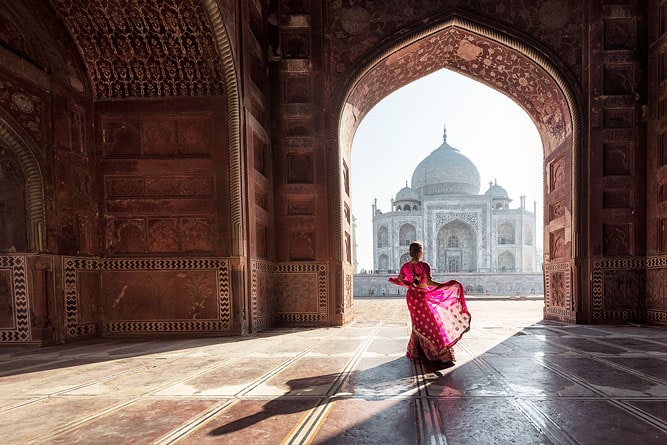
The Taj Mahal is a must-see attraction located in Agra, on the banks of river Yamuna. The mausoleum was built by Mughal Emperor Shah Jahan to memorialise his love for his wife, Mumtaz. This magnificent, ivory-white mausoleum stands as a symbol of transient life that is made eternal with love. The impressive and enormous complex was built in white marble between 1631 and 1648. UNESCO announced the Taj Mahal as a World Heritage Site in 1983 and it was enlisted among the Seven Wonders of the World in 2007.
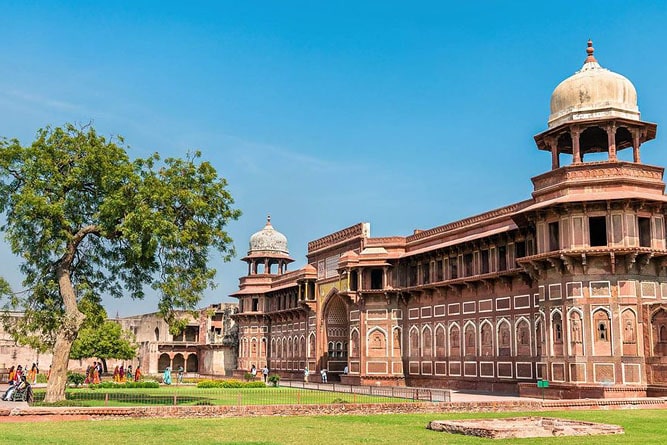
Also known by the name Lal Qila, Agra Fort is a historic monument in Agra. It was built for the Mughal emperor Akbar between 1565 and 1573. The Agra Fort had been the residence of the Mughal emperors until they shifted to Delhi in 1638. Inscribed in the list of World Heritage Sites by UNESCO in 1983, the Agra Fort has been a prime witness to the rise and fall of reputed monarchies. It stands as one of the most visited tourist destinations in the city.
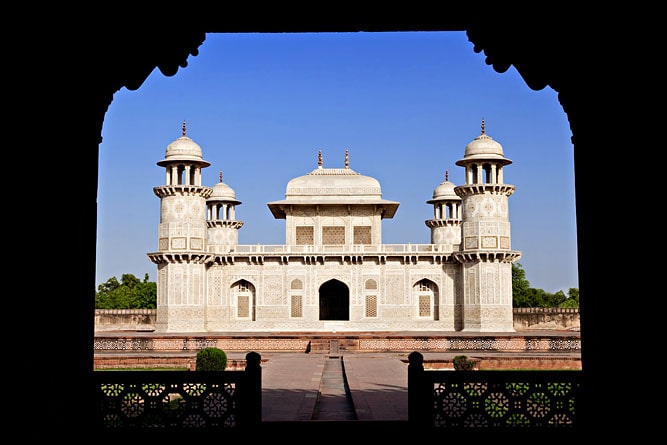
Itimad-ud-Daulah or the Baby Taj is a mausoleum with arched entrances and octagonal towers, situated on the right bank of River Yamuna. Mughal Empress Nur Jahan, the wife of Jahangir, had commissioned the tomb for her father. Itimad-ud-Daulah is built completely with marble, marking the transition from the first phase of Mughal architecture comprising red sandstone monuments to the second phase comprising marble wonders. This Indo-Islamic piece of architecture is the first structure in India to use pietra dura, a technique of inlaying stones like pearls, jade, turquoise and other semi-precious stones to create images. Itimad-ud-Daulah resembles a jewel box in the lush garden that surrounds it from a bird’s eye view.
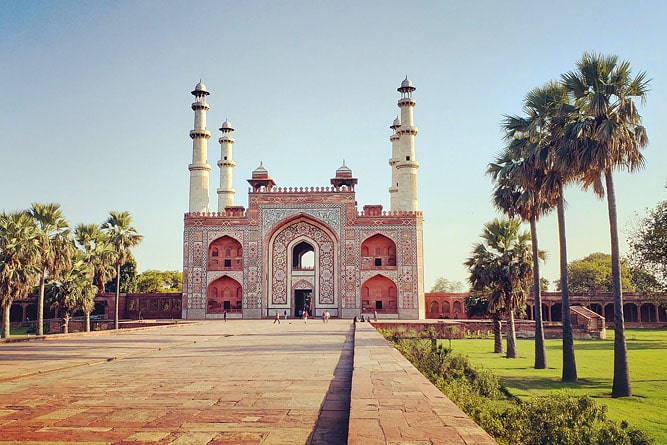
The great Mughal Emperor Akbar (1542-1605) built this monument while he was alive as his resting place during the final days. The mausoleum is located in Sikandra, a town on the outskirts of Agra. A stunning example of Mughal architecture, this historical site sprawls over 119 acres of land. Built with a mix of deep red sandstones and white marble, the monument showcases some features of Gothic and Rajputana-style architecture. Surrounded by a lush green forest, Akbar’s Tomb is a simulation of a small wildlife sanctuary that provides shelter to animals like monkeys, peacocks and deer.
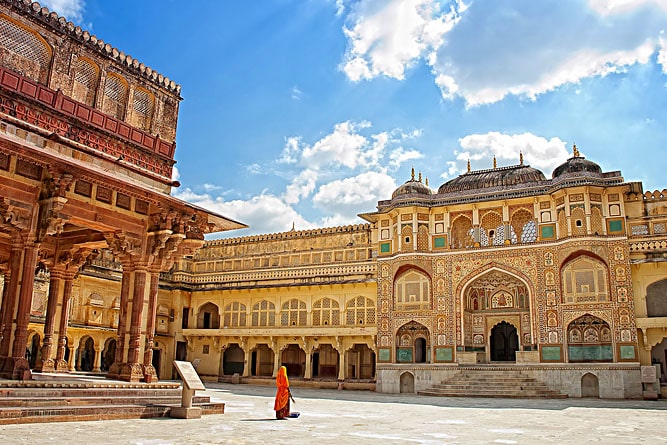
A UNESCO heritage site, Amber Palace, also known as Amer Fort, is an impressive example of the Rajputana style of architecture with some influences of Mughal architecture. The opulent palace is one of the most visited places in Jaipur. It is built on top of a hill overlooking Maota lake. The extensive palace complex is built with pink and pale-yellow sandstone with a mix of white marble. Built by a Rajput ruler, Raja Man Singh, the palace is a stunning example of Rajasthan’s architectural brilliance.
Located on the western banks of river Yamuna, Delhi is the capital of India. With an estimated population of 20 million, Delhi is the largest metropolitan city in India. With striking differences between the old and the new city, Delhi pulsates with ancient and modern life. The city still reflects the aura of a bygone era with grand Mughal monuments to lavish mansions belonging to the British era. The city offers a memorable experience to every kind of traveller.
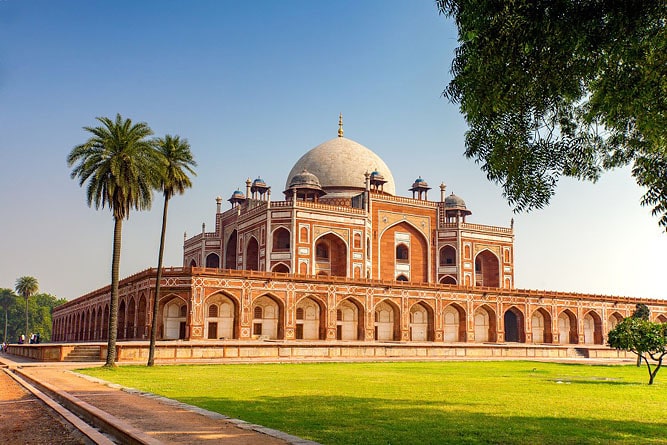
Humayun’s Tomb was built between 1565 and 1572. This UNESCO heritage site houses the last remains of the second Mughal Emperor Humayun. The tomb showcases the modern concept of minimalism in its appearance and is the first tomb to be built as a garden tomb in the Indian subcontinent. Humayun’s Tomb is said to have influenced the construction of various architectural wonders including the Taj Mahal. This mausoleum has been constructed by Persian and Indian craftsmen leading to a stunning amalgamation of the best of both styles of architecture.
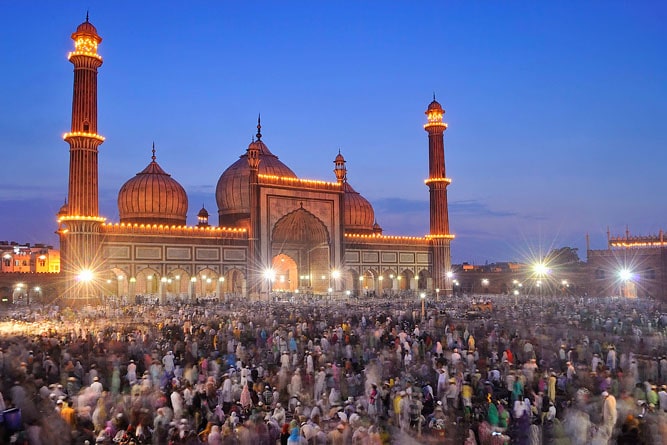
One of the largest mosques in the country, the Jama Masjid was built by Shah Jahan, the Mughal Emperor who also built the Taj Mahal. The mosque stands as an iconic landmark and a popular tourist attraction in the Old City of Delhi. It serves as a spectacular example of Mughal architecture with impressive gates, domes and columns. Delhi’s Jama Masjid is so large that more than 25,000 devotees can assemble inside its premises. Since followers of Islam assemble here for prayer on Friday, this is often called the Friday Mosque.
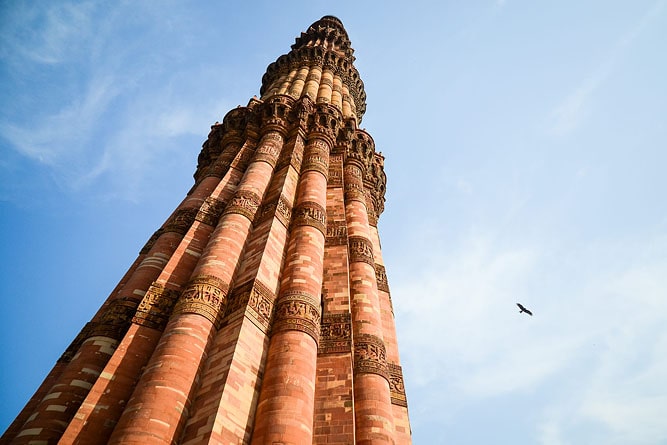
Located a few kilometres towards the south of the city, the Qutb Minar is the highest tower in India. The tower marks the start of Muslim dominance in the country. This UNESCO monument was built by Qutb-Ud-din-Aibak, the first ruler of the Delhi Sultanate after defeating the last Hindu ruler. Red sandstone and a mix of marble and sandstone have been used in the construction of this 73-metre-high tower. Standing against the azure sky, Qutb Minar offers a great spectacle for travellers.
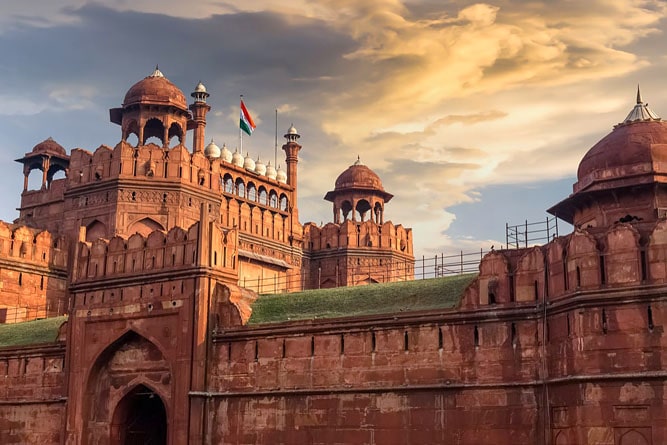
The Red Fort, also known as Lal Qila, is a historic fort in Old Delhi situated at the heart of the city. Constructed by Shah Jahan in the 16th century, the fort served as the main place of residence for the Mughals. This impressive structure is built with red sandstone with its design credited to architect Ustad Ahmad Lahori. Unlike other Mughal monuments, the boundary walls are asymmetrical to contain the older Salimgarh Fort. Included in the list of World Heritage Sites by UNESCO, the Red Fort is the largest monument in Delhi attracting thousands of visitors every year.
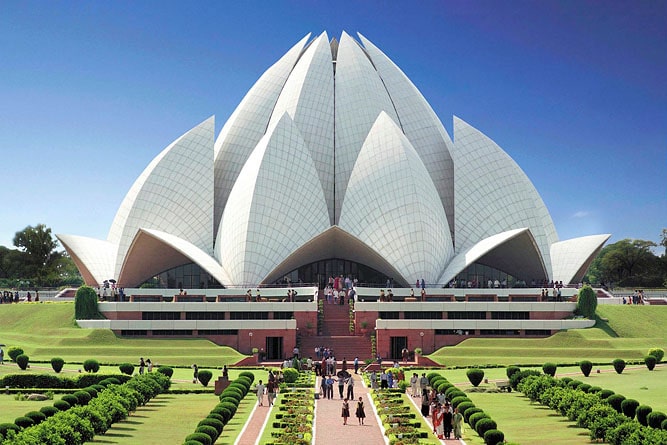
The Lotus Temple, also known as the Bahai House of Worship, is a famous tourist attraction in New Delhi. The Lotus Temple has received a lot of applause for its modern architectural design that resembles the flower lotus. The structure of the temple symbolises the unity of all religions. The construction of the temple was funded by Ardishír Rustampúr from Sindh, Pakistan. Fariborz Sabha was the chief architect of the temple while the UK firm Flint and Neil was responsible for the construction. The temple was inaugurated on December 24, 1986.
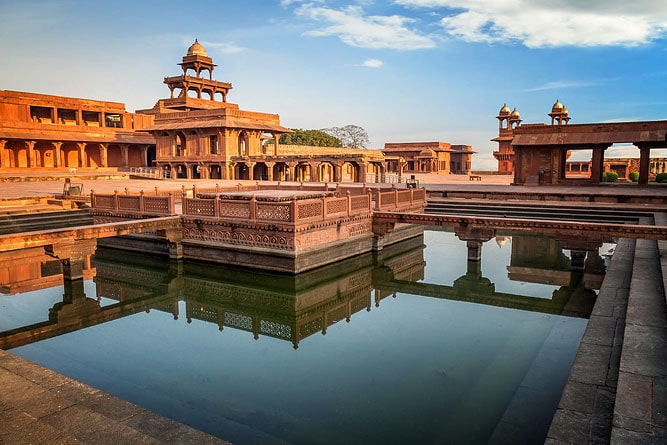
Fatehpur Sikri, also known as the 'City of Victory', holds relics of the ancient town of Mughal India. The city is located in Agra. The city was established as the capital of the Mughal Empire in 1571 as a symbol of Emperor Akbar's triumph during the Gujarat campaign. The city reflects the architectural masterpiece of Indo-Islamic culture and shelters several prominent historical monuments like Buland Darwaza, Jama Masjid and the tomb of Sufi Saint, Salim Chishti. Fatehpur Sikri, a UNESCO World Heritage Site since 1986, retains glimpses of the majestic Mughal era.
Jaipur, the state capital of Rajasthan, is part of the Golden Triangle of India. Jaipur is also known as the Pink City, from the colour scheme on the residing edifices. Jaipur is named after Kachhwaha Rajput ruler, Sawai Jai Singh who founded the city in 1727. It is among the first-ever planned cities of modern India. The city bears testimony to the rich cultural history of Rajput India. The ancient forts, the kaleidoscopic bazaars, the bright festivals and the wealthy lifestyles of the city let you dive deep into the charms of the bygone era.
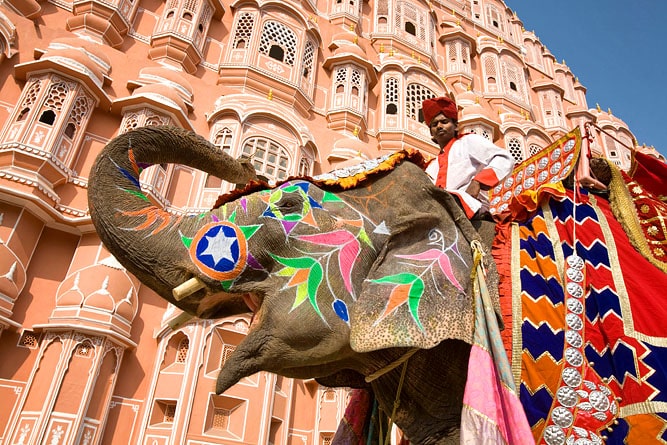
Hawa Mahal, which translates to Palace of Winds, is well known for its facade with 953 windows built in the shape of a honeycomb. In 1799, the then-ruler of the land, Maharaja Sawai Pratap Singh built the palace. It was used by royal family members as a summer pavilion because the windows help to keep the place airy and cool even during the summer months. Built with pink and red sandstone, the palace looks impressive against the azure sky making this one of the must-visit attractions of Jaipur.
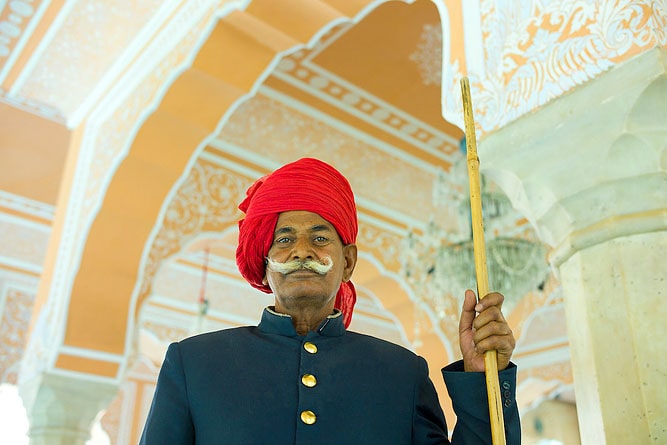
The City Palace is situated in the heart of Jaipur. It was built by the head of the Kachwaha Rajput Clan, Sawai Jai Singh when the capital was shifted to the city. The palace was used by the Maharajas of Jaipur for ceremonial and administrative purposes till 1949. Nowadays, the royal family resides in only a part of the palace. The palace has adapted itself through the centuries and therefore, is a unique architectural blend of Rajput, Mughal and British cultures. A part of the palace has been converted into a museum that bears witness to the centuries-old stories.
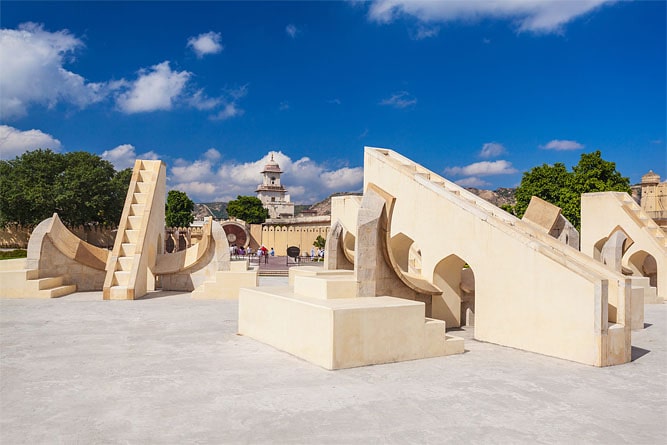
Jaipur’s Jantar Mantar is the largest astronomical observation site among the five that are built in India. It is an awe-inspiring collection of 19 astronomical instruments. Built by the Rajput ruler Sawai Jai Singh, the UNESCO World Heritage monument was constructed in 1734. The instruments were built with the prime objective of collating and gauging astronomical data and studying the movement of celestial bodies. The instruments in the Jantar Mantar allow you to observe the astronomical positions with the naked eye. The literal translation of the name Jantar Mantar is ‘calculating instrument’.
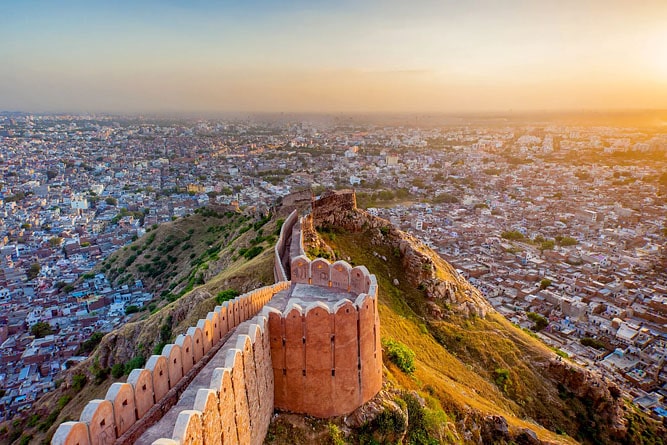
Nahargarh Fort stands upright on the edges of the Aravalli Hills, overlooking the entire city of Jaipur. The fort was built by the land’s ruler, Maharaja Sawai Jai Singh, in 1734. The purpose of erecting this fort was to offer a summer retreat to the royal families. The walls of the Nahargarh Fort form fortifications on the surrounding hills and connect with the Jaigarh Fort. The view from the fort is breathtaking and offers a great opportunity for photographers to frame some beautiful scenes, especially at sunset.
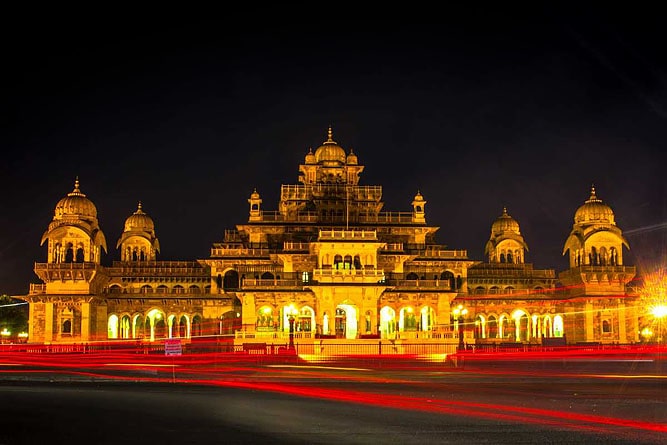
One of the oldest museums of Rajasthan that also functions as the state museum, Albert Hall is located in the Ram Niwas garden. The building is a striking example of the Indo-Saracenic style of architecture. It looks amazing at night when it is lit up beautifully. The museum houses a rich and varied collection of precious artefacts including old paintings, precious jewellery, and stone and metal sculptures. The collection is enriched with priceless coins that date back to the Gupta, Delhi Sultanate, Mughal and British periods.
Jaisalmer, also known as the Golden City, is a famous tourist destination in Rajasthan. Located in the northwestern part of the state, Jaisalmer is home to vast expanses of golden sand dunes, honey-coloured monuments, pristine lakes, beautiful havelis and the formidable Jaisalmer Fort. Camel safari is one of the most popular attractions of Jaisalmer that gives you a real taste of desert adventure. The narrow lanes of the town, crowded with local hawkers, give you a feel of an old-world charm.
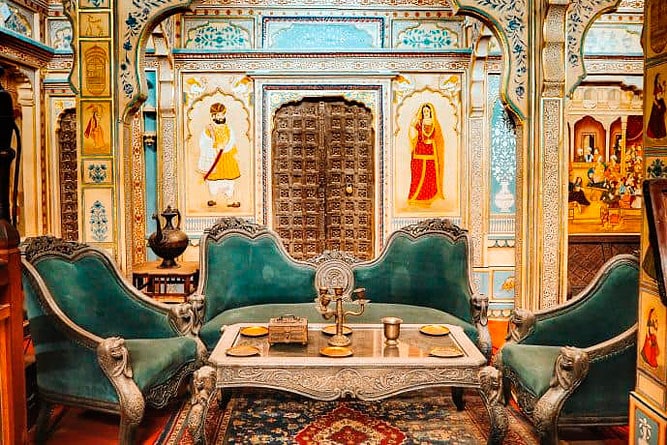
The Golden City houses some of the most extraordinary residences called havelis. Three notable havelis to visit in Jaisalmer are Patwon ki Haveli, Salim Singh ki Haveli and the Nathmal ki Haveli. Patwon ki Haveli is the oldest one among the three. Built with yellow sandstone, the complex is massive, consisting of a cluster of 5 havelis. Salim Singh ki Haveli is spectacular and built in the shape of a dancing peacock. Nathmal ki Haveli showcases a masterpiece with the exteriors intricately carved and two life-sized elephant replicas carved from yellow sandstone at the entrance. The havelis are all situated close to each other.
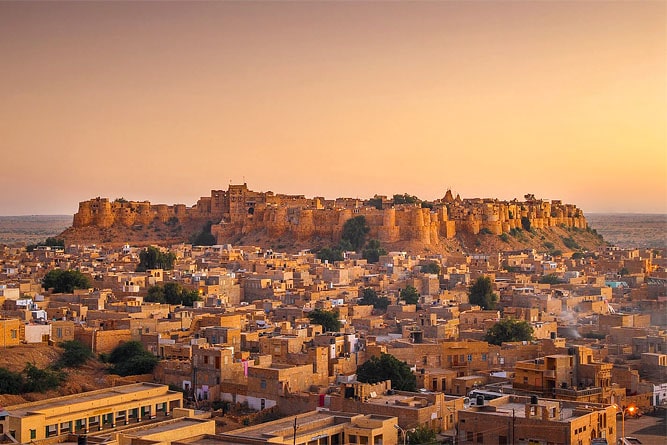
Also known as the Golden Fort, the Jaisalmer Fort is famous for its symbolic presence in Oscar-winning director Satyajit Ray's movie Sonar Kella. Rawal Jaisal, a Rajput ruler, built the fort in 1156. More than 800 years old, the fort is enriched with courageous stories of the long-lost kingdoms, signifying utmost strength. Constructed from yellow sandstone, the fort resembles the features of a honeycomb in its architectural designs. The fort shelters seven Jain temples along with a Hindu temple. Jaisalmer Fort has several palaces among which some still reside by the original family lineage.
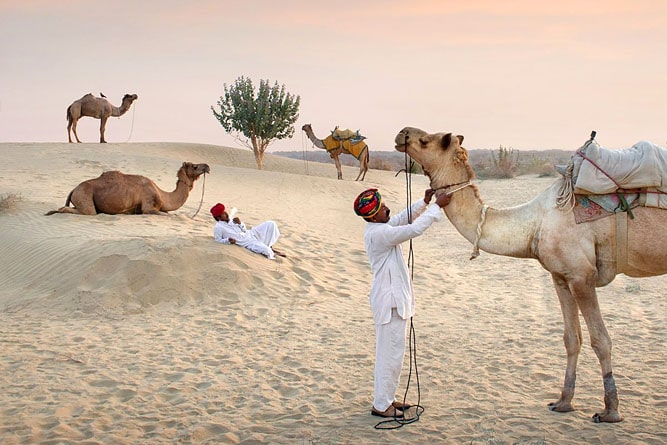
Famous for its epithet, the Great Indian Desert of India, it is the only desert in the country. It is situated in Rajasthan. Water bodies like the Luni river and the Indira Gandhi canal flow across the Thar desert. The Sam Sand Dunes and the safari across a yellow ocean of sand which stretches beyond the horizon have gained popularity among the tourists. It is also renowned for its Desert National Park which houses a diverse species of life forms ranging from birds to reptiles to wild animals and a collection of 100 million years old fossils.
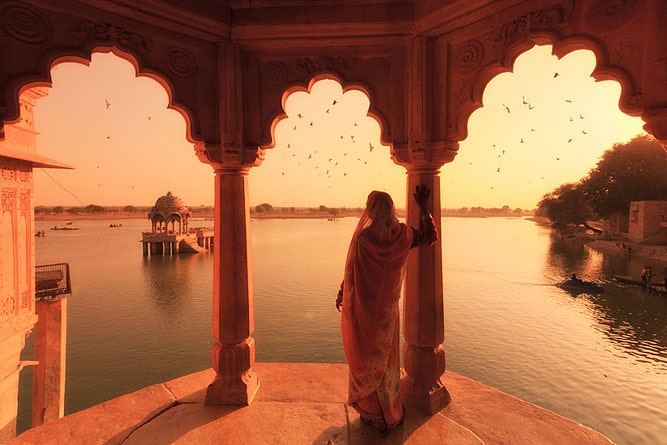
Located in Jaisalmer, the Gadisar Lake is an artificial lake which was built in the 12th century by Rawal Jaisal and served as the only source of water for the entire city. Remodified by Maharawal Gadsi Singh in the 14th century, this artificial oasis is encircled by numerous temples and shrines. The architecture of the old Shiva temple and the Tilon gate speaks about the authentic craftsmanship of ancient Rajasthani culture. The gate gains extra attention for its splendid history. Besides the architectural beauty, a boat ride and bird watching attract visitors to the lake.
Jodhpur is located at geographic centre of Rajasthan. With various hues of blue paint on the old city, it is also known as the Blue City. Jodhpur is immersed deeply into the Marwar culture as it served as the capital for the potent Marwar kingdom. Rathore ruler, Rao Jodha founded the city in 1459. The city was ruled by both Rajputs and Mughals in the bygone time and the outcome of their rule was the conglomeration of the Rajput-Mughal architecture which is evident from the structural designs of the edifices in the city. The city is home to several Rajput palaces, holy temples and magnificent monuments.
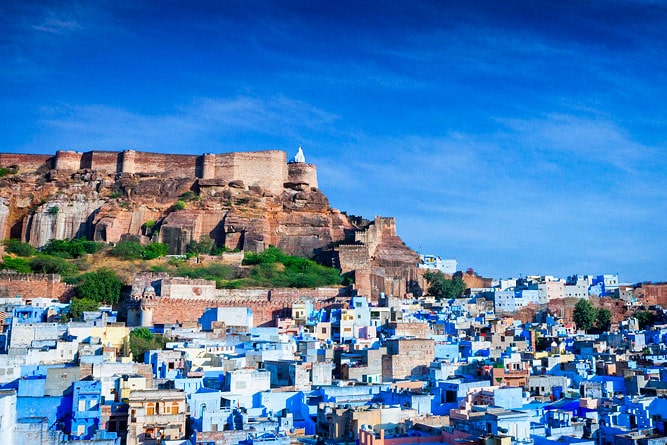
With an impenetrable exterior and an exquisite interior, the Mehrangarh Fort is settled on the rocky hill dominating Jodhpur. While the construction of the fort began with Rao Jodha, the fort continued to be modified for centuries to come. The fort has several noteworthy legends associated with it. The fort houses several palaces, temples and gateways which reflects the harmonious Rajput-Mughal architecture. The lifestyle of the royal families can be witnessed at the Mehrangarh Fort Museum which still retains the paintings, artefacts and relics of the past eras.
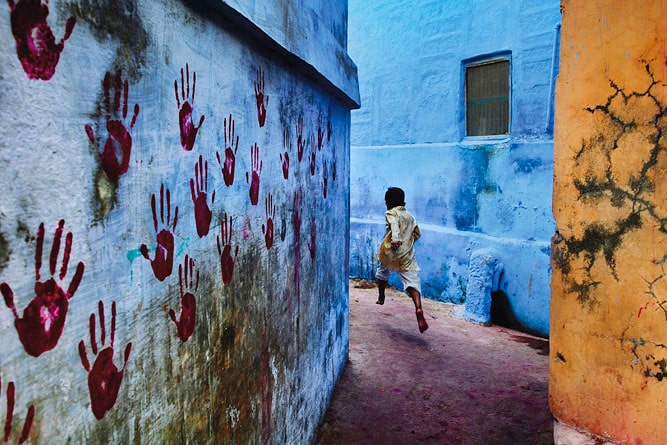
The different hues of blue can be experienced in the Old City of Jodhpur, renowned as the Blue City of India. It tells the tales of ancient regal Rajasthan with the presence of ancient blue houses with men wearing turbans and women in their vibrant skirts. The Old City’s most famous landmark is the Clock Tower Market. The market gets its name from the Clock Tower which was built between 1880 and 1911 by Maharaja Sardar Singh. The Clock Tower is a harmonious blend of Indian and British architecture. Experience a slice of Jodhpur life by visiting this bustling market.
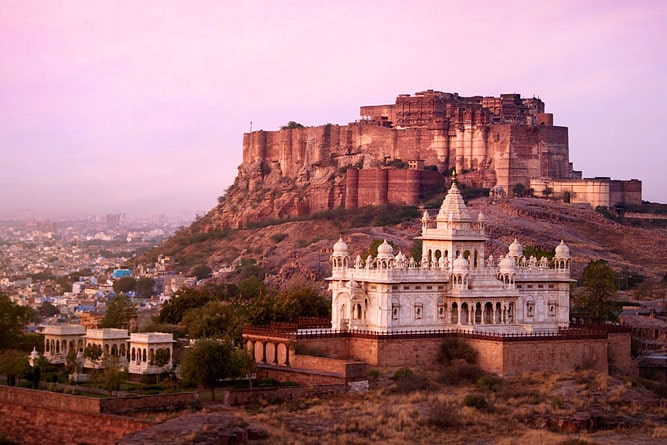
Even though the appearance resembles that of a temple, Jaswant Thada is a cenotaph built in memory of Jaswant Singh II, a 19th-century Rajasthani ruler. It is located in Jodhpur and was built by Maharaja Sardar Singh in 1899, in memory of his father. The edifice also contains cenotaphs of other members of the royal family. Built from white marble and red sandstone, you can witness the Rajput-Rajasthani style of architecture at its finest version. The sun's rays touching the marble make the white Jaswant Thada glow.
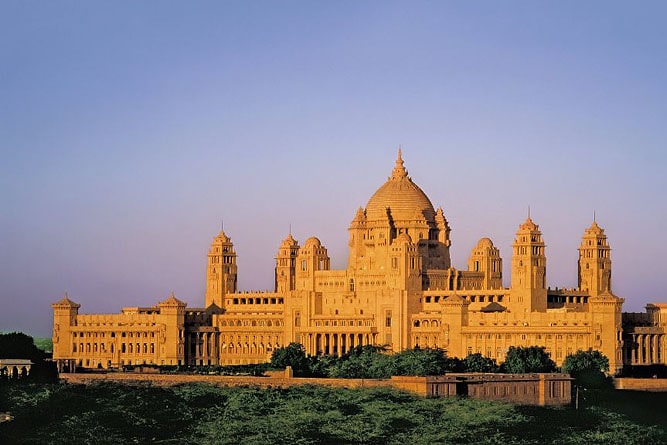
Also known as the Chittar Palace due to its location on Chittar Hill, Umaid Bhavan is the world's sixth-largest private residence. The palace is named after Maharaja Umaid Singh. The area where Umaid Bhavan is built suffered from famine and drought for years, so the king created an employment opportunity for his farmers and he continued the construction of the palace for 15 years. It continued from 1929 to 1943 and employed around 3000 workers. With architectural features of Buddhist, Rajput and Art Deco styles, the palace was constructed by British architect Henry Lanchester.
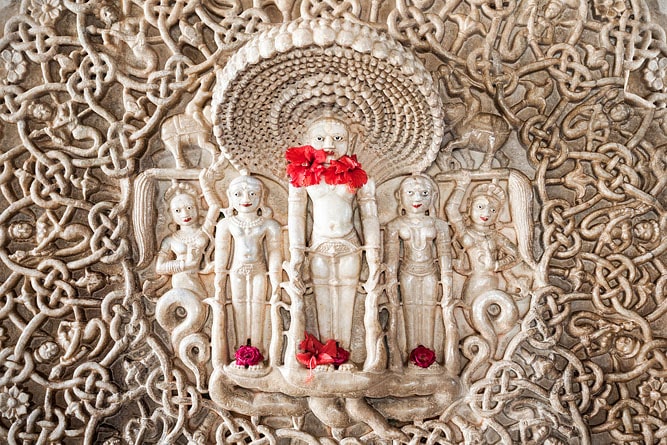
The temple is situated between Udaipur and Jodhpur. It is dedicated to Adinath, the first Tirthankar of the Avasarpiṇi. It was constructed in the 15th century by a Jain businessman, Darna Shah and the chief architect was Deepa. Ranakpur Jain Temple is named after Rana Kumbha, the then-monarch of the province and also the benefactor of the temple. The Ranakpur Jain Temple is filled with intricate carvings, sculptures and detailed craftsmanship and has 1444 pillars, each engraved with unique artwork.
An ancient region located in the northeast part of Rajasthan, Shekhawati showcases the antique artwork of the Rajput-Rajasthani culture. The region was ruled by Shekhawat Rajput since the 15th century. The region was a significant trading post for the business route connecting the Gujarat ports. The artwork and the craftsmanship of the artisans flourished from the 17th to 19th centuries. The Havelis present in the towns of Shekhawati are decorated with diverse painting styles like the Ragamala paintings, murals, mandalas, arabesque and floral designs.
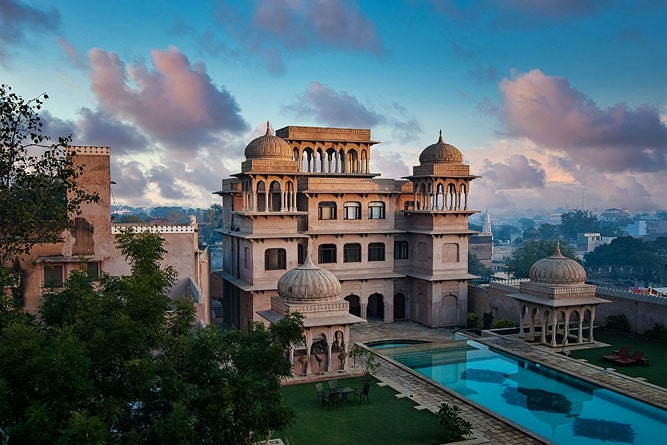
Mandawa is a small town in Shekhawati, Rajasthan, also known as the Open Art Gallery. The town comprises several havelis (merchant’s houses) that are decorated with exquisite fresco artwork, and Ragamala paintings. The theme of the paintings is the incorporation of traditional murals and mandalas with European cultures. Mandawa Castle is a significant monument in the town. It was built by Thakur Nawal Singh in the 18th century. Later, the entire town along with Gulab Rai Ladia Haveli, Bansidhar Newatia Haveli, Sneh Ram Ladia Haveli, Jhunjhunwala Haveli and Chokhani Double Haveli was built around this castle.
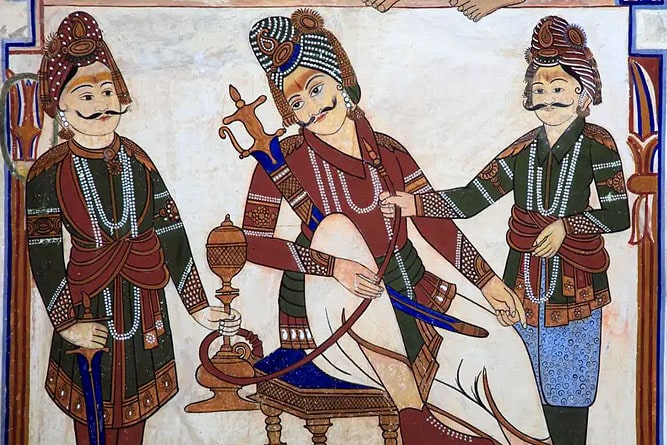
Nawalgarh is one of the busiest towns in Shekhawati. It is often referred to as the City of Havelis. The walls of the havelis in Nawalgarh are ornated with the finest fresco paintings. The theme of the painting in these havelis is majorly portraits of Lord Krishna and Radha. It is through the paintings that they express their admiration for the Lord and onlookers get to experience the artwork and craftsmanship of the 19th-century Rajasthani era. The architecture and paintings showcase the ancient Rajput-Rajasthani livelihood of the royal families. Dr. Ramnath Podar Haveli Museum, Aath Haveli, Bhagton ki Choti Haveli and Khedwal Bhawan Haveli are highly renowned havelis of Nawalgarh.
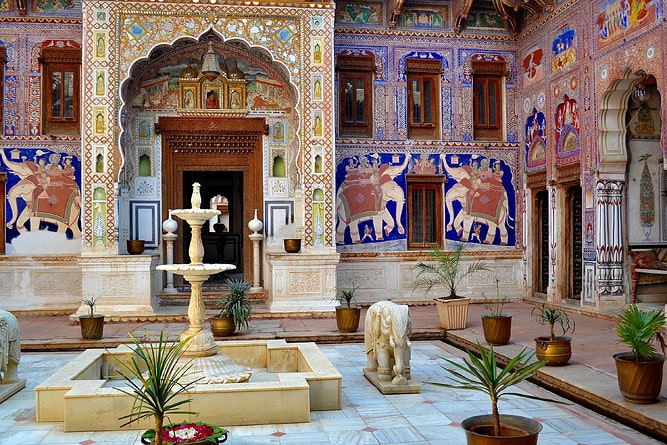
The town of Fatehpur houses the beautiful Nadine Le Prince Haveli. The former name was Nand Lal Devra Haveli. The haveli was constructed by Nandlal Devra, a wealthy merchant, in 1802. Since 1998, the haveli has been maintained by a French artist Nanine Le Prince, a descendant of prominent French painter Jean-Baptiste Le Prince. The architecture of the haveli follows the Rajput-Rajasthani traditional structure and design. The paintings on the walls of the haveli are filled with ancient frescoes, murals, mandalas and Ragmala paintings. However, the haveli also contains contemporary French artwork which compliments finely with the local Shekhawati paintings.
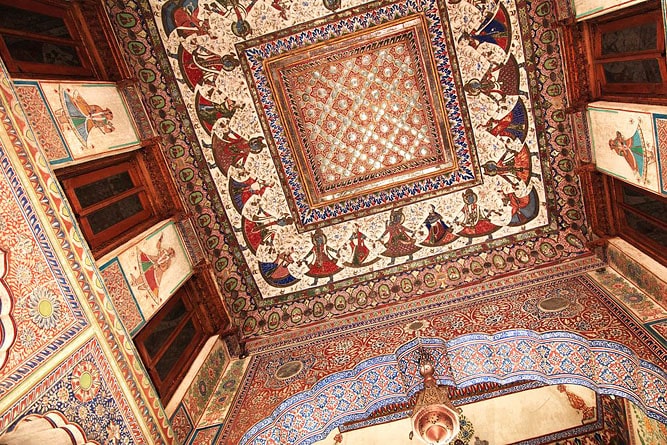
Mahansar is a small town founded by the Shekhawati rulers in 1768. The town houses the Sone Chandi ki Dukan Haveli. This 150-year-old haveli was used for playing games, hosting dance shows and entertainment in the bygone era of the royals which displays how they spend their leisure time. The paintings on the walls of the haveli are incorporated with gold and silver fragments and crushed gems, leading to the epithet of ‘gold and silver shop’. The architecture of the haveli is incorporated with finely carved wooden craftsmanship.
Surrounded by the Aravalli hills and settled in the south of Rajasthan is the city of Udaipur. Colonel James Tod, from the East India Company, identified Udaipur as the ‘most romantic spot on the continent of India’ in 1892. The serene ambience of Lake Pichola stole the heart of king Maharana Udai Singh and thus he built his kingdom’s capital on the banks of the lake. The edifices of the city are built from granite and marble following the Rajasthani-Mughal architecture. With 8 lakes, the city is often referred to as the ‘Venice of East’, and is indeed a land of enchantment.
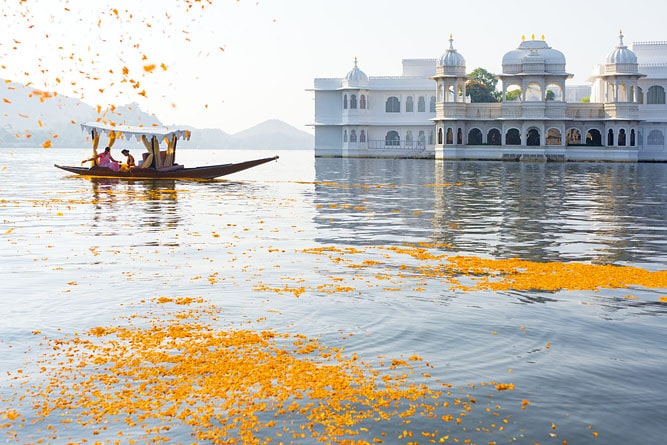
Located in Udaipur, Lake Pichola is one of the eight lakes in the city. It is an artificial lake that was constructed in 1362. The divine view of the lake settled on the Aravalli Range influenced the ruler Maharana Udai Singh to build a city in 1559 encompassing it. The lake is said to have been built by a tribesman, Pichhu Banjara and derived its name from the nearby village, Picholi. The lake harbours islands which have four magnificent edifices like the Mohan Mandir, Jag Mandir and Jagat Niwas. The view of the lake has been beautified by the presence of several mansions, temples and palaces surrounding it.
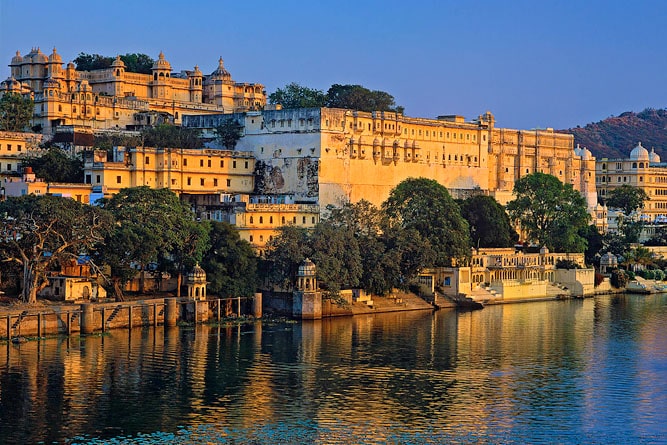
Udaipur’s City Palace is an architectural masterpiece and one of the most expansive complexes in Rajasthan. Located on the eastern banks of Lake Pichola, the palace is encompassed by the imposing Aravalli hills. It was this natural setting that attracted the then-king, Maharana Udai Singh II, to build the palace. The construction of the City Palace started in 1559 and it was completed in the 18th century. Granite and marble have been primarily used in the construction of Udaipur’s City Palace. The palace houses several stunning structures including palaces, temples, gates, courtyards, and gardens among others.
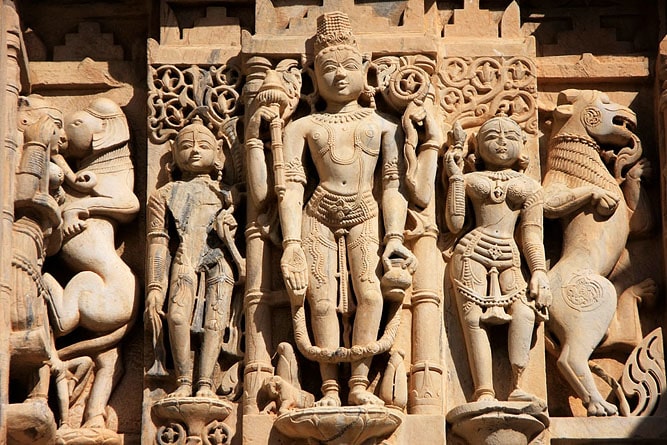
Settled in the core of Udaipur, Jagdish Temple is the largest temple in the city. It is a Hindu temple dedicated to God Vishnu. It was formerly known as the temple of Jagannath Rai which is one of the 1000 names of Vishnu. The temple was built in 1651 by the then-ruler Maharaja Jagat Singh. The theme of Indo-Aryan architecture dominates the temple. Vastu Shastra, a Hindu architectural scientist, was employed to construct the Jagdish Temple. It houses four small shrines along with the idols of Lord Shiva, Lord Ganesha and the sun god Surya and Goddess Shakti.
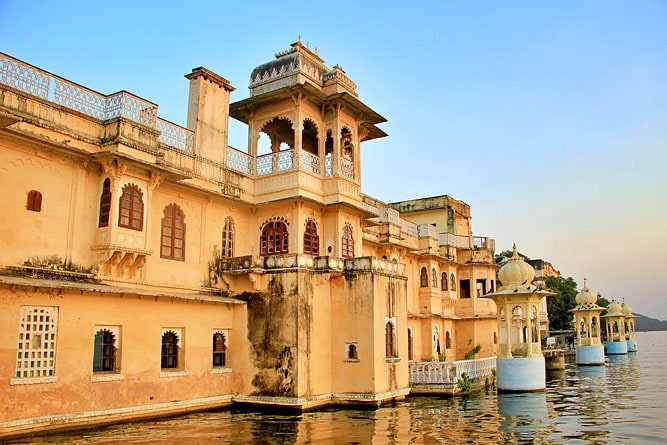
Located on the Gangori Ghat of Lake Pichola, Bagore Ki Haveli is the lofty palace. It was constructed by the Chief Minister of the then Mewar kingdom, Amar Chand Badwa. It was constructed in the mid-18th century. Nath Singh occupied the palace after the death of Amar Chand Badwa and in the later years, it became the royal residence. The authentic Mewar architecture of Rajasthan can be witnessed at Bagore Ki Haveli. The Dharohar Dance Show of the palace is the major attraction that expresses the different vibrant cultures of Rajasthan at its best version.
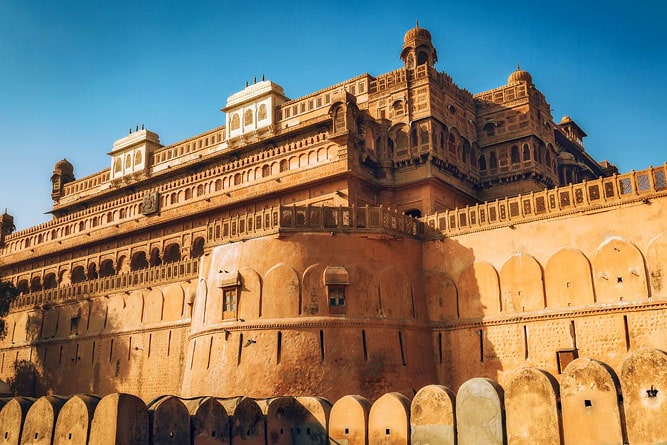
The city of Bikaner is located in northwest Rajasthan. Rao Bika, the first son of Maharaja Rao Jodha, founded the city in 1488 and developed it. Bikaner is a natural oasis on the trade route between Central Asia and the Gujarat coast. The city is home to several grandeur palaces and edifices like the Junagarh Fort, Lalgarh Palace and the Bhandar Temple. The Old City is a labyrinth with five entrance gates.
The small town of Bundi is situated on the south-eastern side of Rajasthan. The town still retains the ancient aura of the regal era. Bundi used to be inhabited by Mina and Bhil tribes. However, Rao Deva Singh of the Chauhan family officially founded Bundi in the 12th century when they were forced to leave their hometown after Mohammud of Ghori’s invasion. With significant edifices like the stepwells, forts and palaces, Bundi is an interesting and quiet town to be explored.
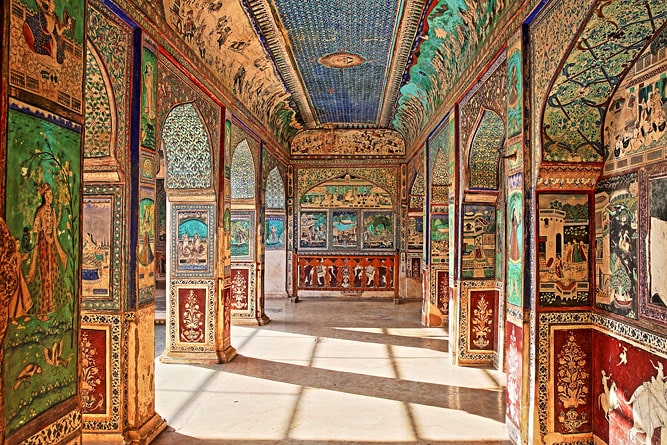
Served as the residence of the royal family, the Garh Palace is located in Bundi. The most unique feature of the palace is that it has remained unaffected by the influence of Mughal architecture. The architecture of the palace is based on the amalgamation of the elements of Deccani art and Bundi craftsmanship. The ruler, Raja Rao Ratan Singh Hada commenced the construction of the palace in 1580 which was later renovated by his successors to boost its magnificence. With several potent structures within the palace and the incorporation of significant Indian painting procedures, the Garh Palace is a must-see attraction of Bundi.
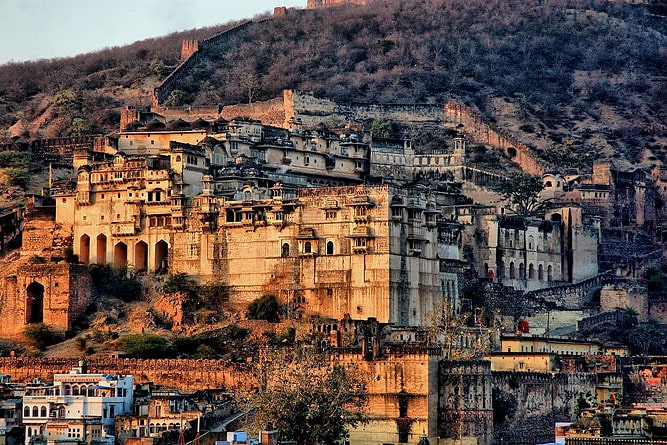
Initially known as the Ajaymeru Durg, the Taragarh Fort is settled in Bundi. King Ajaypal Chauhan, the ruler of Bundi, constructed the fort in 1354. The outlook of the fort is quintessential of forgotten Rajput architecture. Many prominent rulers of India utilised the fort strategically against enemy attacks. Later during British rule, the fort was converted into a sanatorium by Lord William Bentinck. The walls of this 700-year-old fort tell the tale of the elegant past era as the panoramic view of the city from the palace never ceases to amaze the visitors.
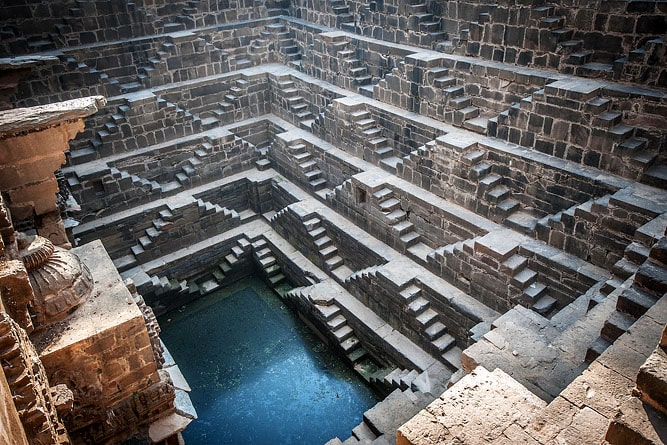
Raniji ki Baori is situated in Bundi. In 1699, Rani Nathavati Ji Solanki, queen of King Rao Raja Anirudh Singh of Bundi, built the stepwell. The architecture of the baori showcases the meticulous craftsmanship of the aesthetic Rajput-Rajasthani style. This 300-year-old stepwell is one of the stepwells in Rajasthan that is untouched by European and Islamic influence of the then contemporary culture. This pure Indian architectural edifice is a popular tourist attraction.
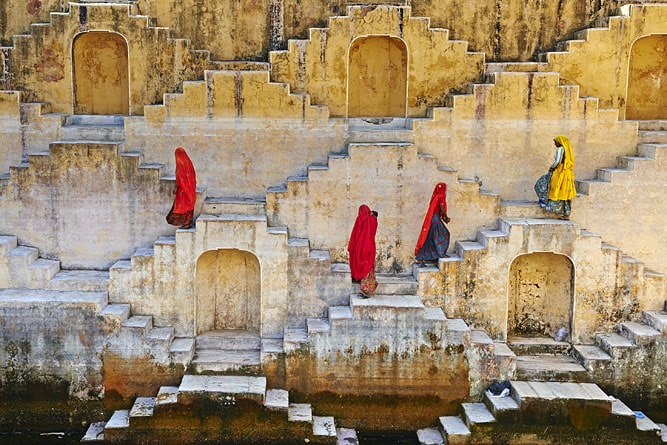
Located 1.5-hour drive east of Jaipur is the Chand Baori Stepwell, Abhaneri. The Chand Baori Stepwell is more than a millennium old and was constructed by the ruler of the 8th-century Nikumbh dynasty, Raja Chanda. The stepwell was dedicated to goddess Harshat Mata who signifies joy and happiness by the king. The temple of Harshat Mata was an auspicious place for pilgrims in the sand ocean. The 100-foot-deep stepwell was constructed as a countermeasure against the water shortage problem in Rajasthan. The architecture of the stepwell is developed on authentic Indian craftsmanship. Later utilised by the Mughals, the stepwell was modified by adding elegant galleries.
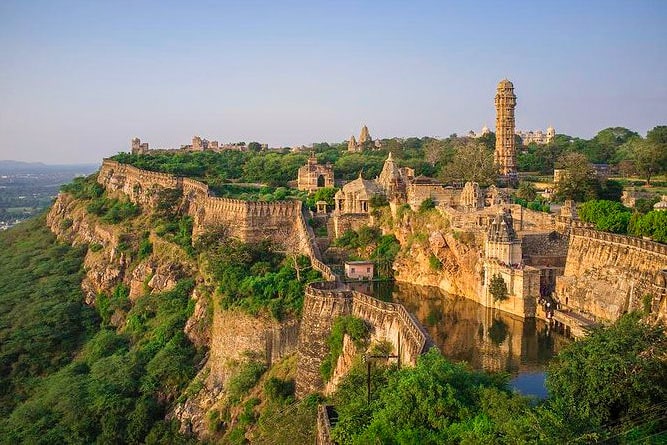
The Chittorgarh Fort is a stunning example of Rajasthan’s grandeur and opulence. The 700-acre fort is the largest in India and Asia housing as many as seven gates, two towers and 65 structures. Some of the palaces housed in this massive citadel are Rana Kumbha Palace, Padmini’s Palace and Fateh Prakash Palace. Chittorgarh Fort has witnessed historic Jauhar- an ancient practice by Rajput women where they sacrifice their lives by jumping in a pyre to save their honour when their king loses a battle.
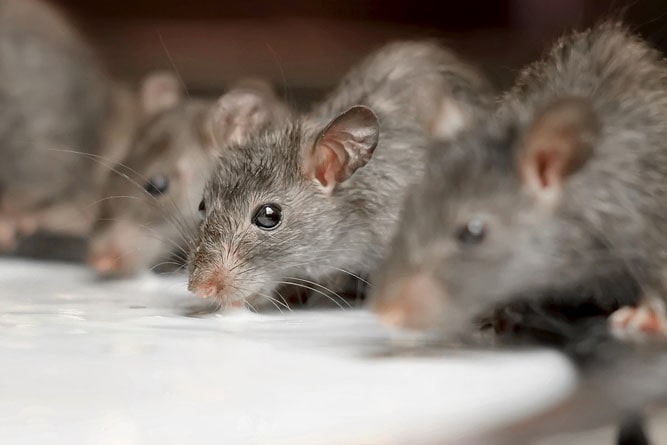
Karni Mata Temple, also known as the Temple of Rats, is a famous tourist attraction located 30 kilometres to the south of Bikaner. The fact that this temple houses over 25,000 black rats and a few white rats allures curious travellers from far and wide. It is believed that if you spot a white rat while touring the temple, it suggests good luck. Built in the Rajput style of architecture, the Karni Mata Temple is over 500 years old. Weirdly enough, there has not been one case of rodent-borne outbreak of diseases in this ancient temple.
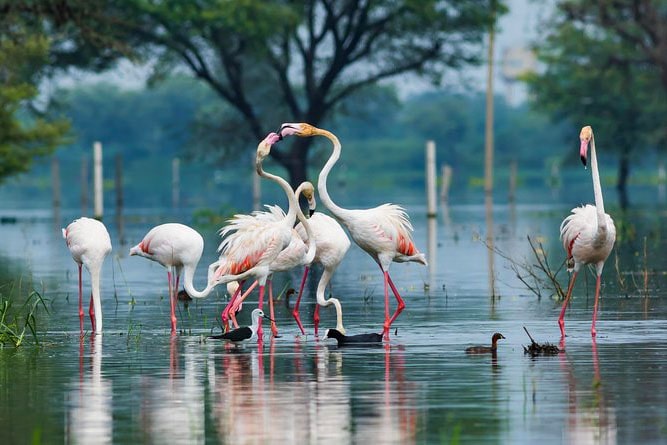
Also known as the Bharatpur National Park, the wildlife sanctuary is located on the eastern side of Rajasthan. Keoladeo National Park is a sanctuary for diverse species of birds from different regions of the world as well as home to regional wildlife due to its natural geographical depression. In the past, it was used as the hunting ground for the royals. Keoladeo National Park is home to various different species of flora and fauna and the chirping of the different birds keeps the ambience of the sanctuary cheerful and merry.
The summer capital of Rajasthan, Mount Abu is located on the loftiest peak of the Aravalli Range. The place attracts tourists from all across the country because of its cool and pleasant climate. In stark contrast to the desert climate of the surrounding area, Mount Abu is surrounded by lush green hills. Besides offering stunning views, the place holds a special religious significance for Jains. Mount Abu has five ancient and important Jain temples, the oldest one of which dates back to the 11th century.
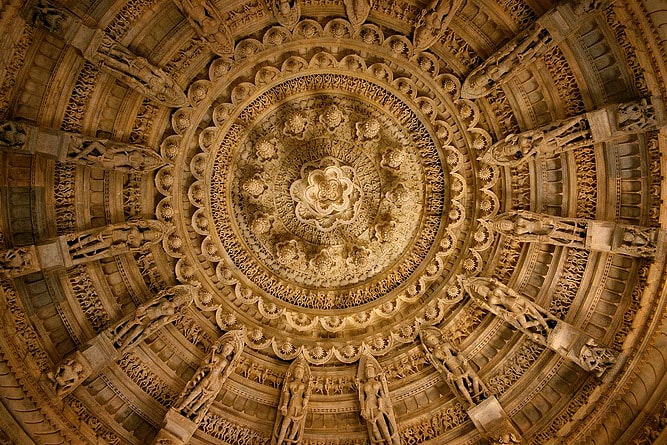
Rajasthan’s only hill station Mount Abu houses a group of Jain temples known as the Dilwara Temples. These ancient Svetambara Jain temples, built between the 11th and 13th centuries, were Maru-Gurjara style of architecture that uses pristine white marble and detailed marble carvings. The names of the 5 principal temples are Vimal Vasahi Temple, Luna Vasahi Temple, Pittalhar Temple, Parshwanath Temple and Mahavir Swami Temple. When you look at the temples, you will surely be amazed by the fact that the builders carried such huge blocks of marble uphill only with the help of elephants.
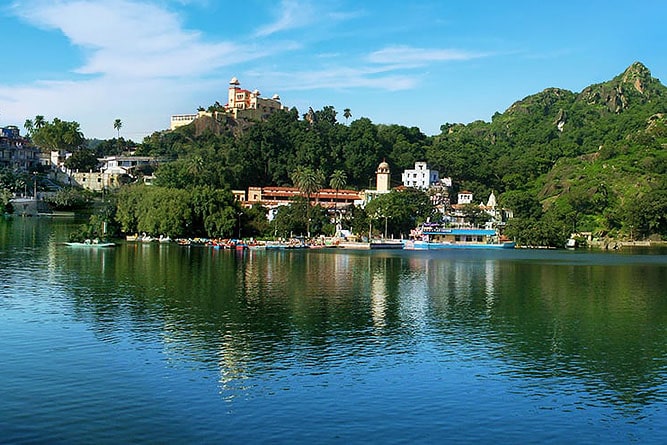
A true paradise for nature lovers, Nakki Lake is situated in the Aravalli Range in the heart of Mount Abu. Nakki Lake is the first-ever man-made lake in India. The surrounding area of the lake is mesmerising to behold. Vast expenses of lush greenery, slopes of nearby hills and rocks with strange shapes dominate the breathtaking spectacle around Nakki Lake. If you sail through the peaceful lake on its clean waters, it feels amazing to see the beauty of Mount Abu unfold in front of you.
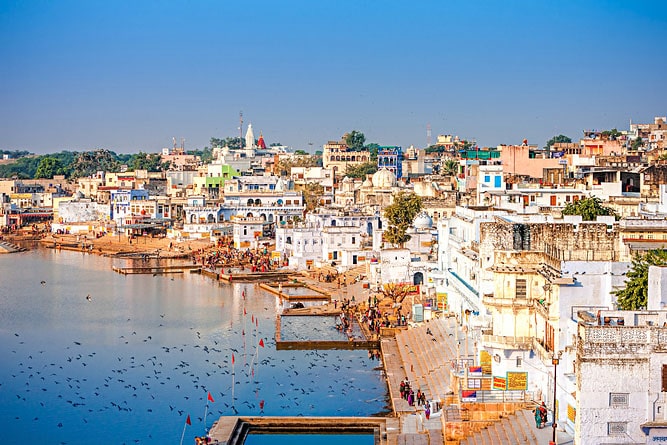
One of the most ancient cities in India, Pushkar is a pilgrimage site that is famous for its exuberant fairs and festivities. Pushkar is located northwest of Ajmer with a hill called Nag Pahar forming a natural boundary between the two cities. Pushkar has an alluring history relating to the Hindu God of creation Brahma dropping a lotus in the lake leading to the birth of the city. Quite interestingly, Pushkar houses the only temple in the world that is dedicated to Lord Brahma. The city coils around Pushkar Lake which has 52 bathing ghats.
Ajmer is known for being a delightful Dargah destination. The city houses Ajmer Sharif Dargah and the shrine of Khwaja Moinuddin Hasan Chisti, the Sufi saint’s final resting place. Muslims and Hindus revere the Dargah. The city’s geography offers a blissful spectacle with expansive, blue lakes and uneven hilly terrain of Aravalli Hills. Ajmer showcases the country’s diversity with different religions, culture and communities coming together to celebrate life together.
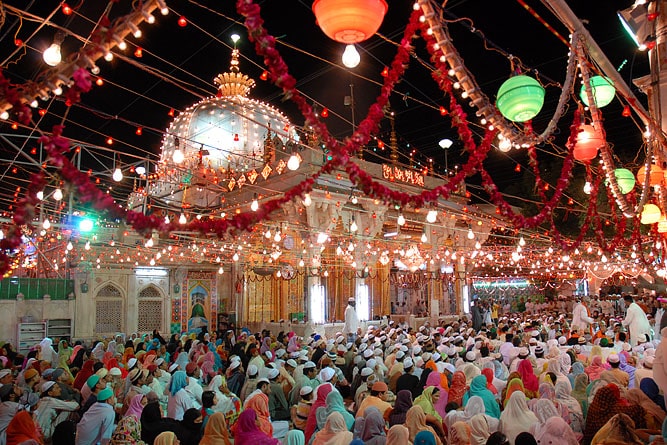
Settled at the foot of the Taragarh Hill in Ajmer, is the tomb of the Sufi Saint, Moinuddin Chishti, known as the Ajmer Sharif Dargah. The 13th-century Sufi Saint and philosopher from Iran passed away in March 1236. The Dargah is considered by people from all religions as a sacred shrine. In the later years, reconstruction and modifications of the Dargah were made by the Mughal emperor Akbar and his successors. It has been a pilgrimage site for Sunni Muslims, Sikhs and Hindus since medieval times. The Dargah showcases the Rajasthani-Mughal architectural theme. A visit to the Ajmer Sharif Dargah will soak you with the essence of humanity and brotherhood.
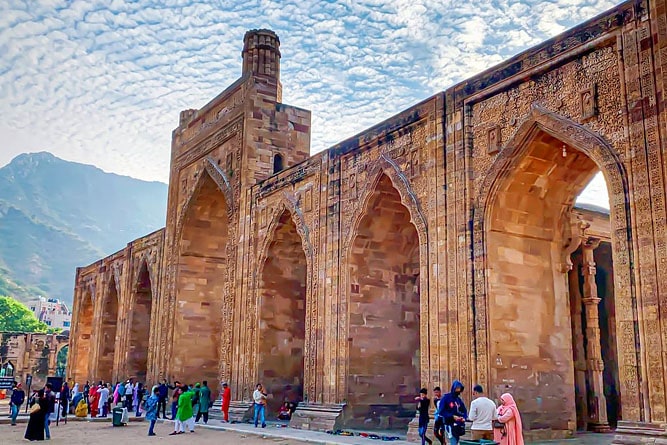
The oldest mosque in Ajmer, Adhai Din Ka Jhonpra Mosque retains the features of the earliest Indo-Islamic architecture that flourished in the Indian subcontinent. Initially, the edifice was that of a Jain temple dedicated to Panch Kalyanaka by Seth Viramdeva Kala in the 6th century. Others say that it used to be a Sanskrit college from the Chauhan Dynasty which was transformed into a mosque under the authority of Muhammad Ghori by Qutb-Ud-Din Aibak. The history of the mosque is derived from the inscriptions engraved on the walls of the edifice. As the story goes, the edifice was converted into a mosque within 60 hours.
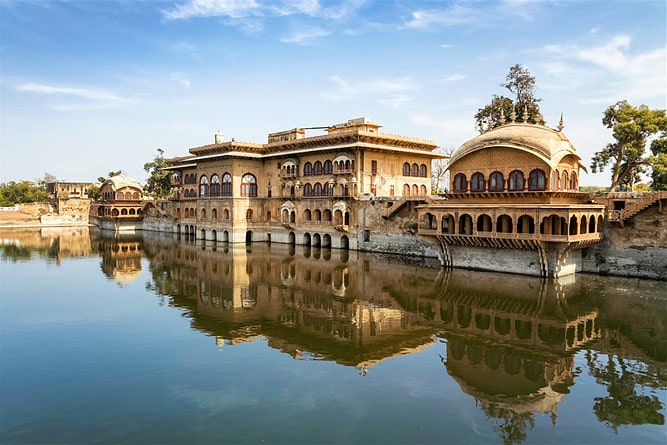
Also known as the Jal Mahal, Deeg Palace was a summer palace for the Bharatpur royal family of Rajasthan. The palace was built by Suraj Mal, the ruler of the Jhats, an agricultural community, in the 18th century as protection against the continuous invasion by enemies. The Mughal architecture has a deep influence on the structural theme of the palace which is further infused with the authentic craftsmanship of Rajasthani artwork. The palace has several edifices within its premises settled and segregated from each other through a quadrangle garden that showcases the captivating magnificence of the Rajasthani-Mughal unification.
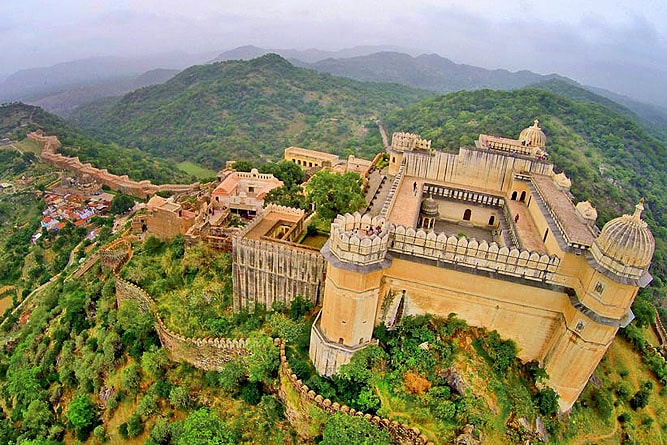
Kumbhalgarh Fort is the second largest walled fort, gaining the epithet of the Great Wall of India. The fortress was built by Rana Kumbha, the ruler of the Sisodia Rajput clan in the 15th century. The fortress houses several Hindu and Jain temples inside its perimeter. The humongous, grandeur and impenetrable feature of the fort stands true to its strength that failed many kings and emperors from invading the fort in its glorious past which is vividly evident from its existence.
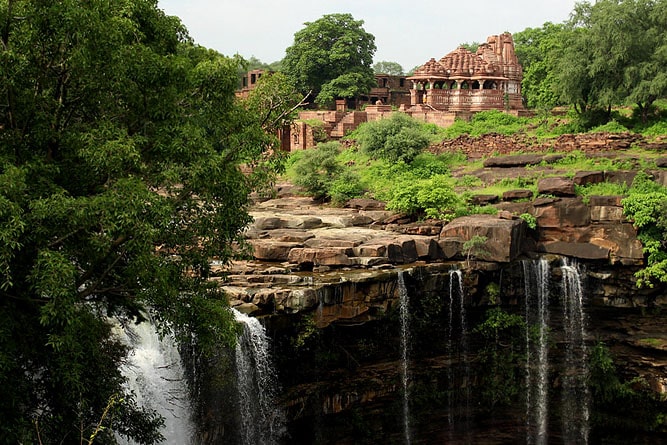
Located between Chittorgarh and Bundi are ancient temples, by a divine waterfall, popularly known as the Menal Waterfall and Temples. The temples date back to the ancient Gupta period of India, the 4th to 6th century. The natural waterfall is 150 feet in depth which boosts its glory in the seasons of monsoon. The temples around the waterfall are all dedicated to Lord Shiva. Isolated and unfamiliar with foreign influence, the architecture of the temples is deeply immersed with genuine Rajasthani architecture and craftsmanship.
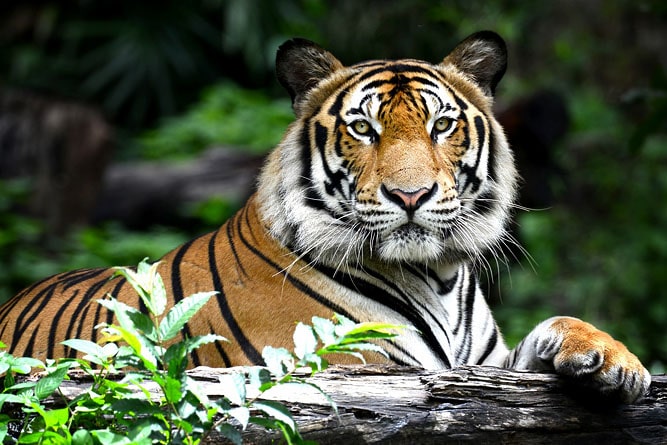
With the Ranthambore Fort settled at the heart of the forest, Ranthambore National Park is located in Rajasthan. The Chambal river flows through its south and the Banas river through its north. This sanctuary is an abode for the wild tigers of Rajasthan. The Ranthambore Fort dates back to the 10th century and was built during the reign of the Chauhan Rajputs. Even though many structures inside the fort are in ruins, the remaining architectural features of the fort portray glimpses of the royal era from the past. The forest has a crocodile-filled lake, temples, mosques, cenotaphs, hunting pavilions along with various native wild animals.
Use this interactive tourist map of Rajasthan to localize the top attractions and decide which places you want to visit during your Rajasthan tour.
On the map, each marker has a photo and a link to the description of the tourist attraction. The map includes the best places to visit in Rajasthan as well as in Delhi and Agra (Golden Triangle tourist circuit).
The markers are of 3 different colours on the map:
For more information, refer to the map legend at the top of this page.
On the top-left corner of the map, the following map control buttons can be used:
